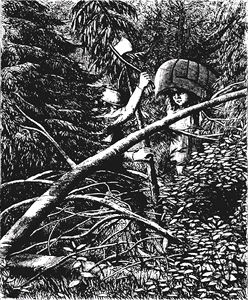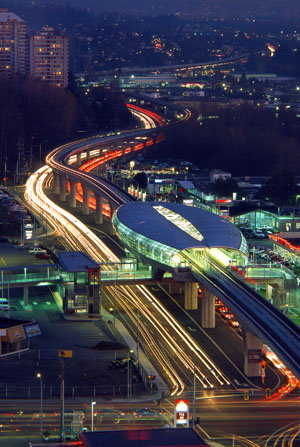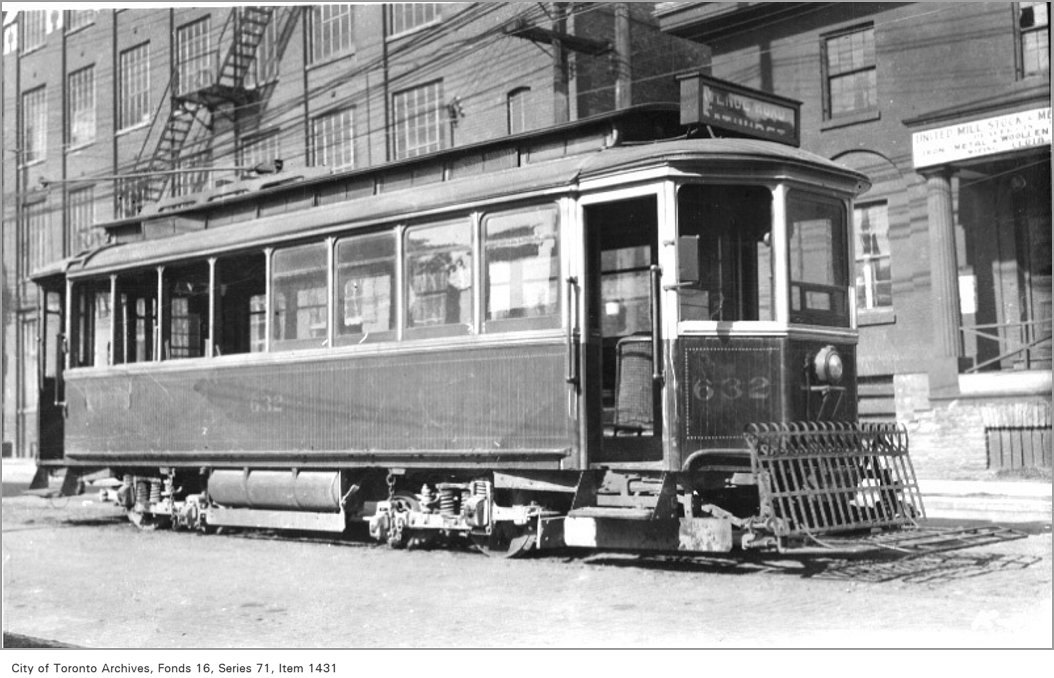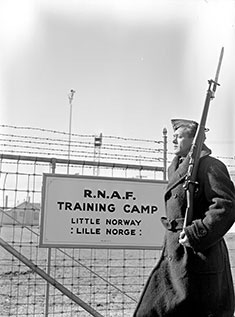Browse "Transportation"
-
Article
Portage
Portage is a way by land around an interruption in a water route. Until the early 19th century most inhabitants of what is now Canada travelled mainly by water. Alexander Mackenzie and Simon Fraser demonstrated that it is possible, by portaging 100 times, to canoe from the St Lawrence to the Arctic or Pacific oceans.
"https://d2ttikhf7xbzbs.cloudfront.net/media/media/6a52818a-3f78-427a-a201-5e6bc9c5d874.jpg" // resources/views/front/categories/view.blade.php
https://d2ttikhf7xbzbs.cloudfront.net/media/media/6a52818a-3f78-427a-a201-5e6bc9c5d874.jpg
-
Article
Quebec, North Shore and Labrador Railway
Quebec, North Shore and Labrador Railway links the towns of Labrador City, Wabush and Schefferville to the port of Sept-Îles.
"https://development.thecanadianencyclopedia.ca/images/tce_placeholder.jpg?v=e9dca980c9bdb3aa11e832e7ea94f5d9" // resources/views/front/categories/view.blade.php
https://development.thecanadianencyclopedia.ca/images/tce_placeholder.jpg?v=e9dca980c9bdb3aa11e832e7ea94f5d9
-
Article
Queen Elizabeth Way
Queen Elizabeth Way, connecting Toronto with Niagara Falls and Fort Erie, Ont, was Canada's first 4-lane, controlled-access superhighway.
"https://development.thecanadianencyclopedia.ca/images/tce_placeholder.jpg?v=e9dca980c9bdb3aa11e832e7ea94f5d9" // resources/views/front/categories/view.blade.php
https://development.thecanadianencyclopedia.ca/images/tce_placeholder.jpg?v=e9dca980c9bdb3aa11e832e7ea94f5d9
-
Article
Railway Station
More familiar are the "road stations" built between 1855 and 1857 for the Grand Trunk Railway's line from Montréal to Toronto and Sarnia.
"https://d2ttikhf7xbzbs.cloudfront.net/media/media/10107a9f-701b-469d-83d4-c13b79c50b3e.jpg" // resources/views/front/categories/view.blade.php
https://d2ttikhf7xbzbs.cloudfront.net/media/media/10107a9f-701b-469d-83d4-c13b79c50b3e.jpg
-
Article
Railways, Track and Yards
Railways, Track and Yards Railway track is the assembly of the 5 basic components - rail, ties, fastenings, ballasts and subgrade - over which trains run. Rails are rolled steel lengths bolted or welded together to form the running surface for trains.
"https://development.thecanadianencyclopedia.ca/images/tce_placeholder.jpg?v=e9dca980c9bdb3aa11e832e7ea94f5d9" // resources/views/front/categories/view.blade.php
https://development.thecanadianencyclopedia.ca/images/tce_placeholder.jpg?v=e9dca980c9bdb3aa11e832e7ea94f5d9
-
Article
Roads and Highways
Canada's first highways were the rivers and lakes used by Indigenous peoples, travelling by canoe in summer and following the frozen waterways in winter. (See also Birchbark Canoe; Dugout Canoe.) The water network was so practical that explorers, settlers and soldiers followed the example of the Indigenous peoples. (See also Coureurs des bois; Voyageurs.) To a greater extent than most other countries, Canada depends for its social, economic and political life on efficient communication and transportation. (See also Economy; Politics.)
"https://d2ttikhf7xbzbs.cloudfront.net/media/media/a2f5cb61-ed14-46ed-9cea-f9bdc1ee18bd.jpg" // resources/views/front/categories/view.blade.php
https://d2ttikhf7xbzbs.cloudfront.net/media/media/a2f5cb61-ed14-46ed-9cea-f9bdc1ee18bd.jpg
-
Article
Rogers Pass
During the summer of 1885 the railway was constructed over the pass at great expense. Over 6.4 km of snowsheds (31) were built to protect trains, trackage and workmen from AVALANCHES (the area receives up to 15 m of snow each winter).
"https://d2ttikhf7xbzbs.cloudfront.net/media/media/4a73903a-ec12-49d4-86cb-2a9cbd3c3f23.jpg" // resources/views/front/categories/view.blade.php
https://d2ttikhf7xbzbs.cloudfront.net/media/media/4a73903a-ec12-49d4-86cb-2a9cbd3c3f23.jpg
-
Article
SkyTrain
The SkyTrain is the rapid transit rail system serving Metro Vancouver, British Columbia. It uses mostly Advanced Light Rapid Transit (ALRT) technology, an automated rail system that operates mainly on a raised guideway, although some sections run underground or at street level. Regular service began 3 January 1986. The SkyTrain’s opening coincided with Expo 86, the world’s fair hosted by Vancouver as part of its 100th anniversary celebrations. The system is run by TransLink, the provincial transit agency for the South Coast of British Columbia. It was the world’s first driverless urban rail system. Now, it is one of the longest fully automated rapid transit systems in the world. The SkyTrain has three lines connecting 53 stations in seven municipalities. In 2018, it had more than 495,000 boardings per weekday, on average.
"https://d2ttikhf7xbzbs.cloudfront.net/media/media/82bd1d11-dffa-4919-8590-ae9ea87a523c.jpg" // resources/views/front/categories/view.blade.php
https://d2ttikhf7xbzbs.cloudfront.net/media/media/82bd1d11-dffa-4919-8590-ae9ea87a523c.jpg
-
Article
St Lawrence and Atlantic Railroad
St Lawrence and Atlantic Railroad, the world's first international railway, began service and was completed and inaugurated on 18 July 1853.
"https://development.thecanadianencyclopedia.ca/images/tce_placeholder.jpg?v=e9dca980c9bdb3aa11e832e7ea94f5d9" // resources/views/front/categories/view.blade.php
https://development.thecanadianencyclopedia.ca/images/tce_placeholder.jpg?v=e9dca980c9bdb3aa11e832e7ea94f5d9
-
Article
Stagecoach
The principal means of public overland transportation in Canada and the US in the first half of the 19th century, the stagecoach was a 4-wheeled vehicle pulled by 4 or more horses. Six or more passengers sat in the suspended
"https://d2ttikhf7xbzbs.cloudfront.net/media/media/e4ffe6a0-221c-4235-aa25-197d12d0167d.jpg" // resources/views/front/categories/view.blade.php
https://d2ttikhf7xbzbs.cloudfront.net/media/media/e4ffe6a0-221c-4235-aa25-197d12d0167d.jpg
-
Article
Street Railways
The low rolling resistance of steel wheels on steel rails, plus the simple guidance mechanism offered by flanges, has made rail-bound transport attractive for a variety of applications.
"https://d2ttikhf7xbzbs.cloudfront.net/media/media/f1606166-71f5-45eb-b06b-09708d15f571.jpg" // resources/views/front/categories/view.blade.php
https://d2ttikhf7xbzbs.cloudfront.net/media/media/f1606166-71f5-45eb-b06b-09708d15f571.jpg
-
Article
Streetcars
Streetcars began operation in Canada during the era of horse-powered local transportation, expanded rapidly with electrification, shrank with a public policy switch in favour of rubber-tired vehicles, and recently re-emerged as light rail transit.
"https://d2ttikhf7xbzbs.cloudfront.net/media/media/9abcd0e2-c095-4a4d-94ef-f9821b34c0e6.jpg" // resources/views/front/categories/view.blade.php
https://d2ttikhf7xbzbs.cloudfront.net/media/media/9abcd0e2-c095-4a4d-94ef-f9821b34c0e6.jpg
-
Article
Subways and Light Rapid Transit
Subways and Light Rapid Transit Subways, sometimes referred to as heavy rail transit, are urban, electric, rapid-transit lines capable of carrying large numbers of people: between 20 000 and 40 000 passengers per hour in each direction.
"https://development.thecanadianencyclopedia.ca/images/tce_placeholder.jpg?v=e9dca980c9bdb3aa11e832e7ea94f5d9" // resources/views/front/categories/view.blade.php
https://development.thecanadianencyclopedia.ca/images/tce_placeholder.jpg?v=e9dca980c9bdb3aa11e832e7ea94f5d9
-
Article
The Last Spike
The Last Spike was the final and ceremonial railway spike driven into the Canadian Pacific Railway (CPR) track by company director Donald Smith on the morning of 7 November 1885. The ceremony marked the completion of the transcontinental CPR and was a muted affair at which a group of company officials and labourers gathered at Craigellachie near Eagle Pass in the interior of British Columbia. One of about 30 million iron spikes used in the construction of the line, the Last Spike came to symbolize more than the completion of a railway. Contemporaries and historians have viewed the Last Spike — as well as the iconic photographs of the event — as a moment when national unity was realized.
"https://d2ttikhf7xbzbs.cloudfront.net/media/media/1f3712f0-f1ac-4fba-a093-ff4c7cfec856.jpg" // resources/views/front/categories/view.blade.php
https://d2ttikhf7xbzbs.cloudfront.net/media/media/1f3712f0-f1ac-4fba-a093-ff4c7cfec856.jpg
-
Article
Toronto Feature: Billy Bishop Toronto City Airport
This article is from our Toronto Feature series. Features from past programs are not updated.
"https://d2ttikhf7xbzbs.cloudfront.net/media/media/5a6d1596-f531-4925-af5b-581cbf1e5f5d.jpg" // resources/views/front/categories/view.blade.php
https://d2ttikhf7xbzbs.cloudfront.net/media/media/5a6d1596-f531-4925-af5b-581cbf1e5f5d.jpg
